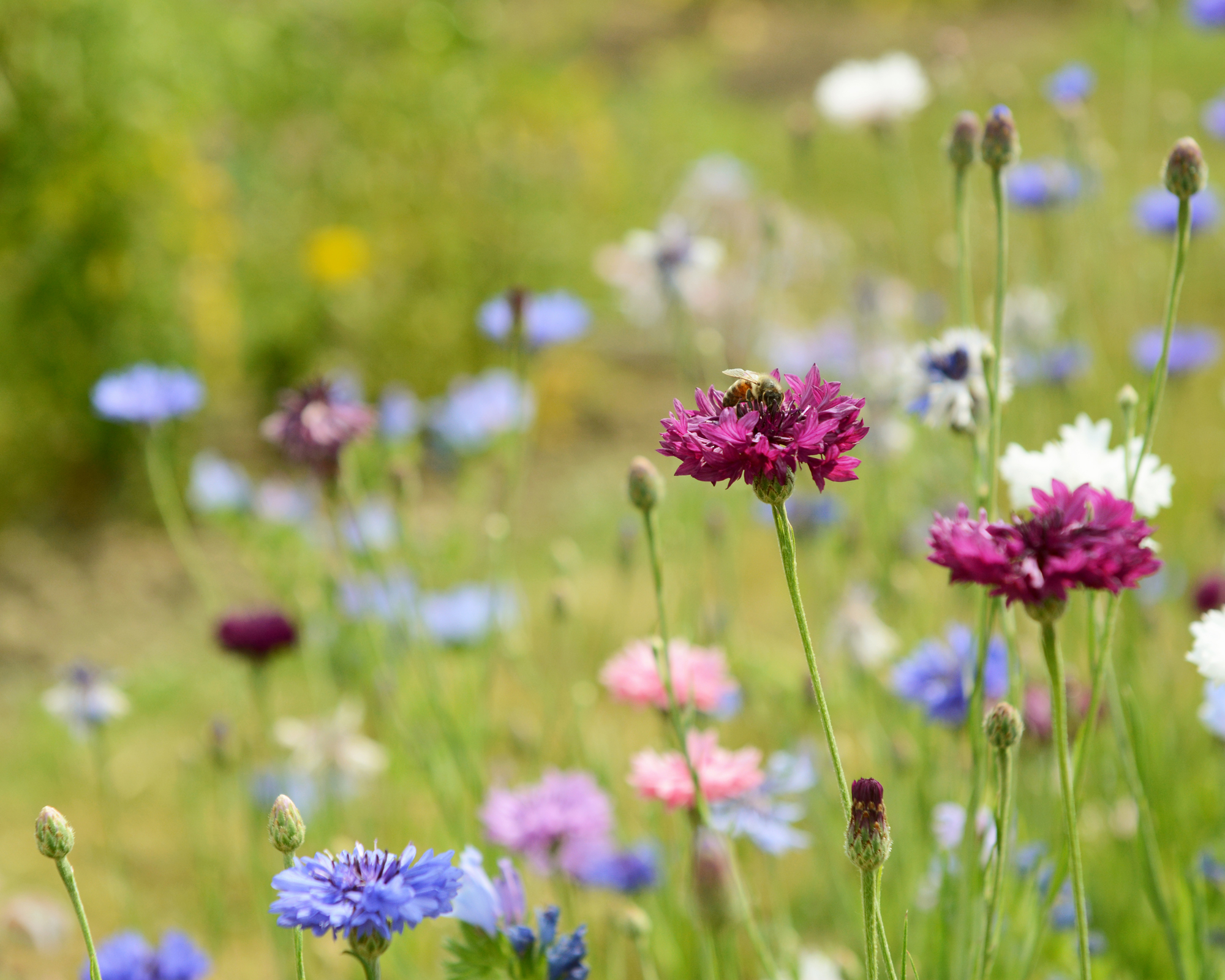3 ways to plant for wildlife wherever you live, according to sustainability consultant
These are the flowers you should plant to attract wildlife to your garden, according to sustainability consultant and garden designer

If you want to create a wildlife garden this summer – and beyond – planting for wildlife with a variety of flowers and flowering shrubs is a very good starting point.
After all, wildlife-friendly yards are easily the biggest trend in garden planting right now, and with good reason. Residential gardens can provide insects and more fauna with food and shelter, and as more gardeners try to attract wildlife to their outdoor spaces, our concept of what we want to grow is changing.
We've spoken to Elizabeth Waddington, Garden Designer & Sustainability Consultant at Horticulture.co.uk. These are her top tips for choosing the best flowers and plants for wildlife, wherever you live.
Go native

Honeybees feeding on cornflowers in a field
This is the simplest and most reliable rule to encourage wildlife into your outdoor space. Waddington says that 'wherever you live, seeking out flowers which are native to your area will help you find the best plants for the best places and create a haven for native wildlife.
'Native wildlife has adapted and evolved alongside the local plant life, so while non-natives might also provide food or nectar, shelter or habitat for wildlife too, native flowers and often the best possible options.'
The easiest way to find out what's native in your area is to visit a local nature reserve or woodland and see what flowers grow there that are visited by bees. If you don't have that opportunity, then seeking out wildflower seed mixes(from Amazon, for example) that originate from your area is a very good idea.
Choose species that flower at different times of the year

Potted cyclamen blooming during fall
Planting summer flower varieties is easy – everyone likes a bright poppy or cornflower in their backyard. But, as Waddington points out, pollinators, beneficial insects, and other wildlife will love a garden that provides blooms over as much of the year as possible.'
Get small space home decor ideas, celeb inspiration, DIY tips and more, straight to your inbox!
That means seeking out flowers and flowering shrubs that provide pollinators land other wildlife with food when there's less of it to go around – ideal for a bee-friendly garden. 'For example, choose some early spring bulbs like Aconites or Cyclamen, and winter or early spring flowering trees or shrubs like Witch hazel, Mahonia, or Daphne, for example.'
Also, when your perennials have finished flowering, don't chop them back until spring, 'so seeds are available for birds and other creatures, and the foliage can shelter a range of wildlife through the coldest months.'
Cater to different preferences

Borage, or Borago Officinalis
What's tasty to a bee may be slightly different to what is tasty to a butterfly. Different creatures prefer 'flowers with different colors, shapes, and forms', explains Waddington. 'For example, bees love flowers which are blue/purple or white – colors they can see most clearly.
'Some pollinators prefer single flowers, from which they can sup nectar most easily. Others have adapted to feed from, for example, tubular flowers.'
If you're looking for the one flower that will be beloved by many pollinators and has lots of nectar, consider planting Borage (Borago officinalis) – 'it not only produces a lot of nectar, it also replenishes that nectar very quickly.'
Borage is often found in wildflower seed mixes and bee bombs, or you can plant it on its own.
Enjoy wildlife gardening – there aren't any strict rules, and the more different types of flowers you have the better. 🌺 🌼 🥀
Anna is a professional writer with many years of experience. She has a passion for contemporary home decor and gardening. She covers a range of topics, from practical advice to interior and garden design.